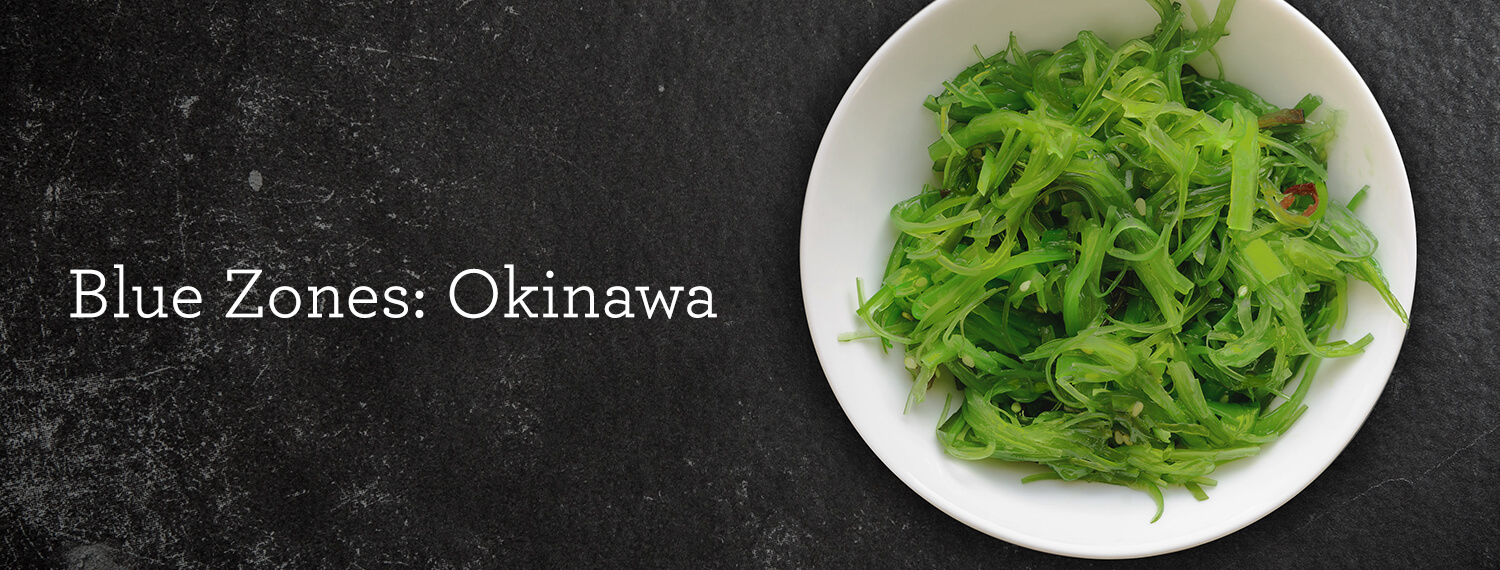Important Lessons About Diet and Longevity
Being old may be perceived as something to fear: a time of life that is riddled with disease, chronic pain, and physical limitations.
It is no wonder that as the years advance, many grow apprehensive of what the future holds.
But as the Blue Zones teach us, it does not have to be like that.
This is the second installment of our Blue Zones series, a collection of articles that explore the populations around the world where people live 100 years or longer.
In the first blog post, we discussed what the Blue Zones have in common.
Today, we will focus on the Blue Zone of Okinawa, Japan, shining a spotlight on the lessons that these beautiful islands can teach us about living long, healthy lives.
The Okinawan Magic Touch
For thousands of years, Okinawa has been well-known as the ‘place where you grow old.’
In fact, this stunning Pacific archipelago has historically been home to some of the world’s oldest inhabitants; men live until at least 84 while women live until 90 on average.
Most importantly, Okinawans lead long, healthy lives, avoiding many of the common ‘old people diseases’ like cancer, heart disease, and dementia.
Relative to Americans, the Okinawans experience 8-12x times fewer deaths from heart disease and are 2-7 times less likely to die from various forms of cancer.
What Is in the Water?
Of course, the obvious question is WHY the Okinawans manage to live such long, healthy lives.
And the answer is simple—it is mainly about diet.
The traditional Okinawan diet is low in calories but nutritionally dense.
Their high anti-inflammatory and antioxidant regime combines root vegetables (i.e. sweet potatoes), green and yellow vegetables, soybean-based foods, and medicinal plants.
And while Okinawans do eat meat and fish, it is a negligible amount; only 1 percent of their diet is comprised of fish, and less than 1 percent comes from meat, eggs, and dairy.
This means their diet is approximately 96 percent plant-based. Equally, the Okinawan diet consists of more than 90 percent whole foods, with very low consumption of processed foods.
Here are some of the highlights of the traditional Okinawan diet:
- Sweet Potato: The imo or Okinawan sweet potato (purple or yellow in color versus our ‘orange’ sweet potato) has long been a dietary staple and a main source of calories. It is full of flavonoids, vitamin C, fiber, carotenoids and slow-burning carbohydrates.
- Bitter Melon: Known as goyain, bitter melon is most often prepared with other vegetables in an Okinawan favorite dish called goya champuru. Considered to be an ‘effective anti-diabetic,’ recent studies show bitter melon to be as helpful as pharmaceuticals when it comes to blood sugar regulation.
- Tofu: Tofu is eaten 8 times more often in the traditional Okinawan diet compared to its typical American counterpart.
- Turmeric: Turmeric, which is rich in antioxidants and has anti-inflammatory properties, is used as a spice and as a tea.
- Brown Rice: The Okinawans prepare their brown rice by soaking it in water, then letting it germinate until it just begins to sprout, which unlocks enzymes that break down the sugar and protein, giving the rice a softer texture and sweeter flavor.
- Shiitake Mushrooms: The inhabitants of Okinawa adorn their miso soup and stir-fry with shiitake mushrooms, which seem to help protect the immune system.
- Seaweed: Seaweed is a filling yet low-calorie food that adds nutrients to the Okinawan diet. Kombu and wakame are the two most commonly eaten seaweeds and are featured in many soups and stews.
Why Okinawan Longevity Is Now a Thing of the Past
It is important to note that Okinawan longevity is sadly declining as many of the islands’ inhabitants have adopted Western eating habits with gusto.
Over the last few decades, the traditional Okinawan diet has transformed beyond recognition.
With the help of Western fast food restaurants, the Okinawans have gone from being the leanest group of Japanese to the heaviest in just two short generations.
The consumption of bread, milk, meat, eggs, and poultry have all soared.
Saturated fat and sodium intake have tripled, and cholesterol has skyrocketed.
And inevitably, the incidence of lung, breast and colon cancer has almost doubled.
Okinawan public health professionals are greatly concerned by the deterioration and are looking to re-educate young Okinawans and encourage them to return to the traditional “Okinawan way.’
The moral of the Okinawa story?
Having a long and healthy life is within our grasp, whether you live in a Blue Zone or elsewhere.
The key is to adopt the right lifestyle.
The Okinawans have clearly shown us all the advantages of eating plant-based—and how those benefits can disappear if you start to consume a processed, animal-based diet.
In the end, the ‘secret’ to a long life is really not such a secret after all.
Just keep to a whole food, plant-based diet, and you will be well on your way toward ensuring a long and healthy life.


